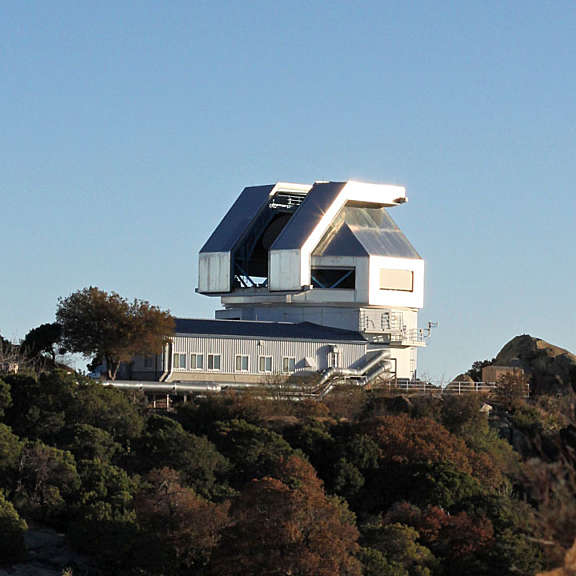Phase Curves
Even if exoplanets don’t pass in front of their host stars as seen from Earth, they can still cause detectable variations in a star’s apparent brightness, with the combined brightness of star and planet changing over the course of the planet’s orbit. How a rotating object changes in brightness over the course of its rotation is called its phase curve. While no planets have been definitively identified using the phase-curve method yet, many good candidates have been identified; it’s only a matter of time.
There are several different ways that planets can influence stellar brightness:
Like our own Moon, planets have phases. When the planet is in between us and its star, we see its nightside (like the new Moon). When the planet is on the opposite side of its star from us, we see its dayside (like the full Moon). From Earth, we can’t actually image an exoplanet, but we can see variations in brightness of the whole system (planet plus star) as the planet goes through its phases; the system's brightness peaks when the planet is in "full" phase. This method is most effective for large planets in close orbits around dim stars because their phases change more frequently and cause a larger change in the whole system’s brightness.
Relatedly, if the planet is close enough to its star and if its temperature is hot enough, astronomers can see thermal emission from its dayside. If the planet is tidally locked (that is, if it always keeps the same face pointed at its star), the thermal emission peaks at full phase. But if the planet isn't tidally locked (or just has strong winds), thermal emission can peak a bit earlier or later than at full phase because some of its heat moves to the nightside either by rotation or atmospheric motion before it dissipates.
Close-in, massive planets can raise tides on their stars, which distort the stars from a sphere or squashed-sphere shape to a pointier shape like that of a rugby ball or American football. The star appears dimmer when a pointy end is aimed at us—because it appears smaller from that point of view—and brighter when we see it broadside. The time between two brightness peaks is half a planetary orbit. Planetary astronomers who study asteroids use a similar method to determine asteroid shapes.
As a star swings around the barycenter of a planetary system—the point where the gravity of star and planet balance out—the star can appear brighter as it approaches us and fainter as it recedes.
Advantages:
Like transits, phase-curve signals are imprinted in measurements of stellar brightness over time, which are much easier and cheaper to obtain than radial velocity data because phase curves can be obtained with much smaller and more simply instrumented telescopes. Phase curve measurements also contain much more information about the planet than transits alone.
Planets for which reflection signals can be detected are good candidates for further spectroscopic study, because the light bouncing off the planet contains information on the composition of the visible surface or atmosphere.
We can also use thermal emission as a way of measuring weather on exoplanets: if the planet’s peak in thermal emission is offset from full phase, it could indicate that strong winds are sweeping the planet’s hottest region eastward or westward from where it would otherwise be.
Ellipsoidal variations, unlike transits, are strongly sensitive to the planet’s mass and eccentricity. They are a means of measuring planet mass directly from a star’s light curve, without needing to obtain followup radial velocity measurements. Furthermore, ellipsoidal variations are observable even when a planet does not transit, so they could be used to detect non-transiting planets.
Disadvantages:
In order for reflection signals to be visible, planets have to be large relative to their stars. The method is biased toward finding hot Jupiters—large, close-in planets with short orbital periods. Similarly, ellipsoidal variations and relativistic beaming signals are stronger for heavy, close-in planets.
Phase curve signals can also be confused for variations in brightness across the surface of the star itself, due for example to starspots. This is a problem for asteroid observations, too—it is difficult to tell an ellipsoidal asteroid from one with large variations in reflectivity on its surface.
This article was last updated in February 2020 by Emily Sandford and Planetary Society staff writers.
How to Search for Exoplanets
Some methods almost sound like science fiction: Using gravity as a magnifying glass, watching stars wobble at turtle-like speeds, and searching for tiny dips in starlight.


 Explore Worlds
Explore Worlds Find Life
Find Life Defend Earth
Defend Earth


